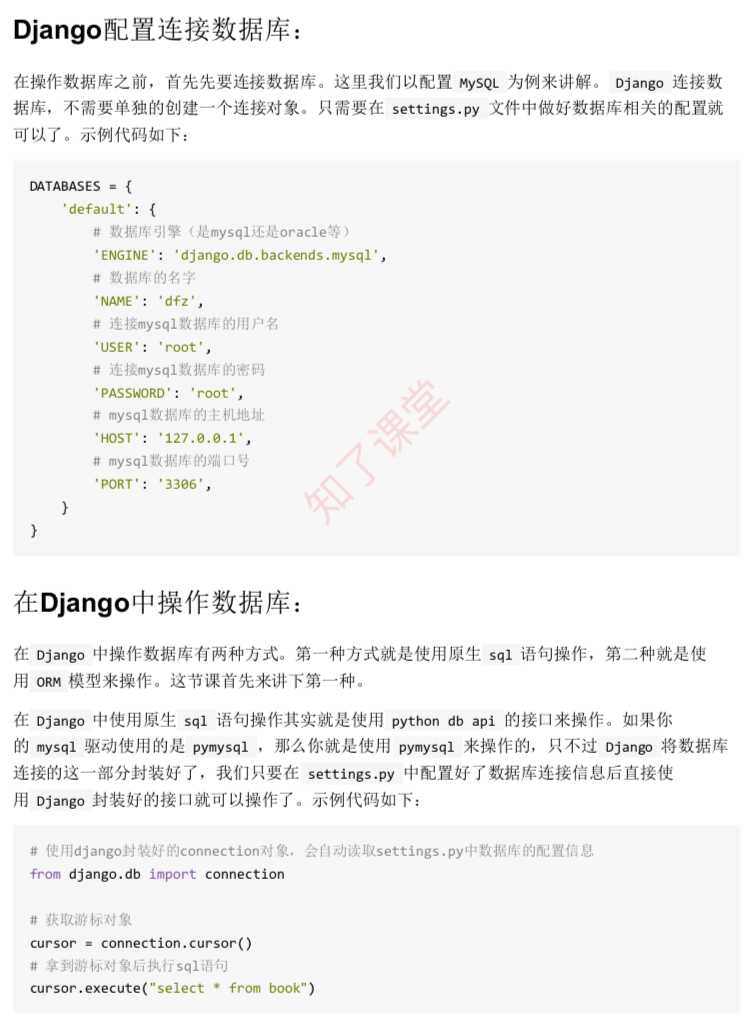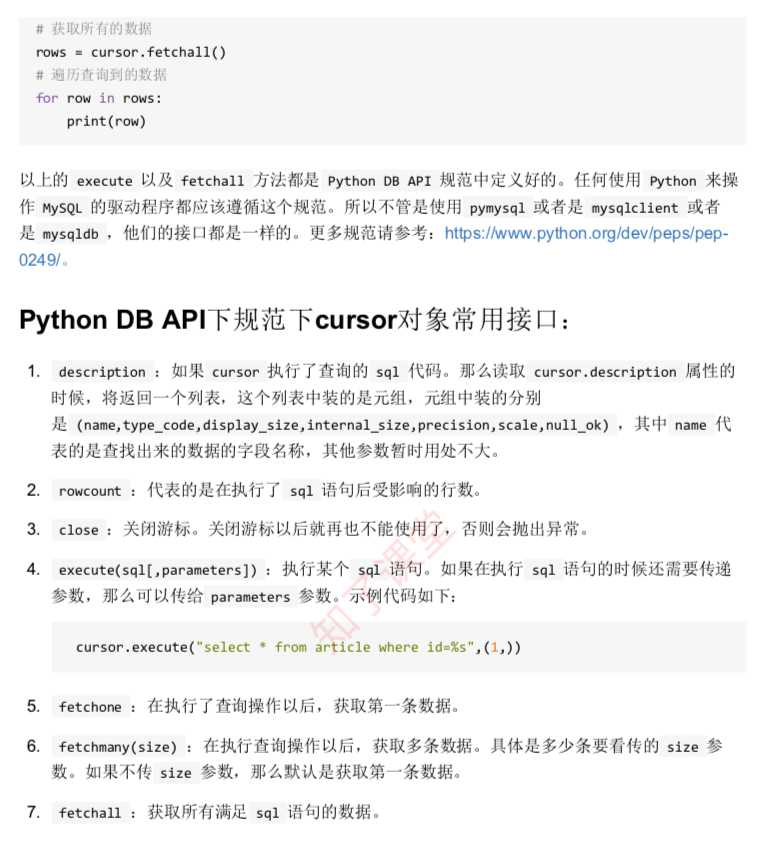标签:options ima wmi roo format mysqldb nali doc from
修改settings.py文件
""" Django settings for db_operation_demo project. Generated by ‘django-admin startproject‘ using Django 2.1.5. For more information on this file, see https://docs.djangoproject.com/en/2.1/topics/settings/ For the full list of settings and their values, see https://docs.djangoproject.com/en/2.1/ref/settings/ """ import os # Build paths inside the project like this: os.path.join(BASE_DIR, ...) BASE_DIR = os.path.dirname(os.path.dirname(os.path.abspath(__file__))) # Quick-start development settings - unsuitable for production # See https://docs.djangoproject.com/en/2.1/howto/deployment/checklist/ # SECURITY WARNING: keep the secret key used in production secret! SECRET_KEY = ‘j@^55ibyauzd2c_*^09zp@+44pj5g8u4hq)lufepw1@$3u4z%)‘ # SECURITY WARNING: don‘t run with debug turned on in production! DEBUG = True ALLOWED_HOSTS = [] # Application definition INSTALLED_APPS = [ ‘django.contrib.admin‘, ‘django.contrib.auth‘, ‘django.contrib.contenttypes‘, ‘django.contrib.sessions‘, ‘django.contrib.messages‘, ‘django.contrib.staticfiles‘, ] MIDDLEWARE = [ ‘django.middleware.security.SecurityMiddleware‘, ‘django.contrib.sessions.middleware.SessionMiddleware‘, ‘django.middleware.common.CommonMiddleware‘, ‘django.middleware.csrf.CsrfViewMiddleware‘, ‘django.contrib.auth.middleware.AuthenticationMiddleware‘, ‘django.contrib.messages.middleware.MessageMiddleware‘, ‘django.middleware.clickjacking.XFrameOptionsMiddleware‘, ] ROOT_URLCONF = ‘db_operation_demo.urls‘ TEMPLATES = [ { ‘BACKEND‘: ‘django.template.backends.django.DjangoTemplates‘, ‘DIRS‘: [os.path.join(BASE_DIR, ‘templates‘)] , ‘APP_DIRS‘: True, ‘OPTIONS‘: { ‘context_processors‘: [ ‘django.template.context_processors.debug‘, ‘django.template.context_processors.request‘, ‘django.contrib.auth.context_processors.auth‘, ‘django.contrib.messages.context_processors.messages‘, ], }, }, ] WSGI_APPLICATION = ‘db_operation_demo.wsgi.application‘ # Database # https://docs.djangoproject.com/en/2.1/ref/settings/#databases DATABASES = { ‘default‘: { ‘ENGINE‘: ‘django.db.backends.mysql‘, ‘NAME‘: ‘django_db1‘, ‘USER‘: ‘root‘, ‘PASSWORD‘: ‘passwd‘, ‘HOST‘: ‘localhost‘, ‘PORT‘: ‘3306‘ } } # Password validation # https://docs.djangoproject.com/en/2.1/ref/settings/#auth-password-validators AUTH_PASSWORD_VALIDATORS = [ { ‘NAME‘: ‘django.contrib.auth.password_validation.UserAttributeSimilarityValidator‘, }, { ‘NAME‘: ‘django.contrib.auth.password_validation.MinimumLengthValidator‘, }, { ‘NAME‘: ‘django.contrib.auth.password_validation.CommonPasswordValidator‘, }, { ‘NAME‘: ‘django.contrib.auth.password_validation.NumericPasswordValidator‘, }, ] # Internationalization # https://docs.djangoproject.com/en/2.1/topics/i18n/ LANGUAGE_CODE = ‘en-us‘ TIME_ZONE = ‘Asia/Shanghai‘ USE_I18N = True USE_L10N = True USE_TZ = False # Static files (CSS, JavaScript, Images) # https://docs.djangoproject.com/en/2.1/howto/static-files/ STATIC_URL = ‘/static/‘
# pip3 install pymysql
修改__init__.py 文件
import pymysql pymysql.install_as_MySQLdb()
views.py
from django.shortcuts import render from django.db import connection def index(request): cursor = connection.cursor() # cursor.execute("insert into book(id,name,author) values(null,‘三国演义‘,‘罗贯中‘)") # cursor.executemany("insert into book(id,name,author) values(null,‘三国演义‘,‘罗贯中‘)") ‘‘‘执行多条sql语句‘‘‘ cursor.execute("select * from book") # rows = cursor.fetchone() # rows = cursor.fetchmany(2) rows = cursor.fetchall() for i in rows: print(i) return render(request,‘index.html‘)


标签:options ima wmi roo format mysqldb nali doc from
原文地址:https://www.cnblogs.com/randomlee/p/10312054.html